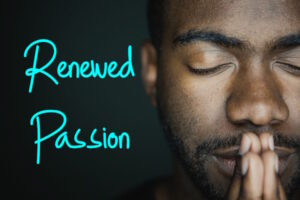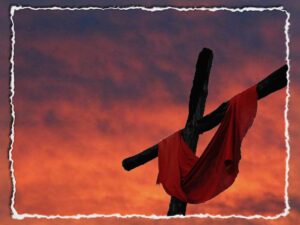A congregation of the United Church of Canada
Yr C ~ Transfiguration Sunday ~ Luke 9:28-36
Imagine you are Peter, or James, or John. Here’s what’s happened to you in Luke chapter 9. 
You and the rest of the 12 main disciples were sent out to preach about the kingdom of God and heal people.
Then you come back from your mission trip (v.10) and Jesus takes you on a retreat, but a crowd follows you and he ends up feeding 5000 people – first with preaching and then with food!
The next thing you know Jesus has you and the disciples off together again for more prayer (v.18) and Jesus gets really intense. He asks you and the other disciples who people say he is, and who you say he is, and, of course, Peter blurts out an answer (as he is wont to do) and says, “You are the Messiah!” Jesus says don’t tell, people need to find out for themselves – then he lays out the heavy and high cost of discipleship, or following him, and also the blessings.
That’s the background!
Eight days later (after you’ve had a good long time to ponder all that challenging stuff that Jesus said), Jesus has asked you (Peter, James, and John) to accompany him as he goes up a mountainside to get away and pray. So off the four of you go, and what you see and experience next is pretty much indescribable.
We know the story really well. It’s one of the major stories of the Christian faith. The Transfiguration is right up there with Christmas, Jesus’ baptism, his temptation, Holy Week (including Palm Sunday, Maundy Thursday’s last supper, and the crucifixion story of Good Friday), then the Resurrection on Easter Sunday, and the day of Pentecost. Those all get attention every year – as does the Transfiguration.
So why is this such an important event?
The main reason, I think, is quite subtle, and it’s easy to gloss right over it. Up until this point Jesus has been preaching and teaching as an itinerant rabbi.
In this prayer time, in this holy place, he is filled beyond description with the Holy Spirit – so much so that his face changes (presumably glowing with bliss, delight, blessing, and holiness), and his clothes appear to shine with a dazzling, blinding whiteness (indicating pure holiness and the presence of God) – which is all very wonderful but not yet the most important part!
As Jesus is transformed, or transfigured, two figures appear beside him, and speak with him. Those two figures are Moses and Elijah.
The significance of that – and yes, this is the big important part – is that Moses and Elijah represent the two main strands of Jewish theological importance – the law (Moses) and the prophets (Elijah).
So having Moses and Elijah, the law and the prophets, appear with Jesus and speak with him, communicates to us that Jesus is to be understood as the fulfillment of both of those theological strands, and the embodiment of God’s Way, God’s kingdom, God’s hope for the world.
In glory the three figures come together and glow in holiness and blessing, and Jesus is elevated from rabbi to messiah. Peter had blurted out earlier that Jesus was the Messiah – now he’s really experienced that affirmation in technicolour!
And then the story gets even stranger.
Peter the blurter is at it again, this time suggesting they should build three dwellings for the glowing gang. But ‘dwelling’ here is the same word as tabernacle, which is the tent of worship that the Jews put up everywhere they camped during the Exodus. Moses and Elijah were speaking to Jesus about his “departure” – but that word in Greek is actually exodos, so with all these references Peter has actually perceived this story insightfully – that Jesus is the new Moses leading the people to a new promised land – if they’ll follow.
Well, will they? Will Peter, James, and John?
To seal the deal a cloud envelops them – the cloud is another direct reference to the Exodus journey where God’s Presence accompanied them as a ‘cloud by day and a pillar of fire by night’.
Take a breath.
You’ve just seen your rabbi/teacher talking to the two biggest figures in your religion, they’re all glowing in dazzling white holiness utterly overwhelming your senses and your reasoning, and now you’re enveloped in a cloud of God’s Holy Presence.
And then a voice rings out, “This is my son, my chosen. Listen to him!”
And then everything (and everyone) kind of fades out and there’s just the 3 of you and Jesus.
And they kept silent and in those days told no one any of the things they had seen.
How does your brain wrap itself around such a profoundly awesome (in the fullest sense of the word) experience?
What would you say?
How would you put it into words if someone asked you?
But that’s not what my message is about today. It’s actually about how this all started, and what it’s all rooted in.
None of this happens – no cloud, no voice of God, no Moses and Elijah, no glorious glowing, none of this happens unless Jesus does two things: goes off to a separate place, and prays.
He wasn’t just strolling along a dusty road and “wham” he gets zapped by a holy lightning bolt.
No, it’s very clear, here and all throughout the gospel of Luke – prayer is where it’s at, and Jesus prays a lot!
And when Jesus prays, big things happen, important things happen; he is changed.
That’s what I want to focus on today – prayer – and specifically how Jesus prays, and what benefits he gets from it – and ultimately I’ll ask, if prayer is good enough for Jesus, and necessary for Jesus, then what do you think we all oughta be doing about it?
Jesus has been a pray-er from the very start.
In Luke’s telling of the baptism story after Jesus is baptized he is praying (Luke 3:21) and he has a mystical encounter with the Presence of God very much like the Transfiguration story we’re looking at today, and he’s filled with the Spirit and receives a blessing from God.
He prays, and his response is that he launches his public ministry.
In Luke 6:12 Jesus is out and alone and he prays all night long, the entire night immersed in Presence, in prayer.
He prays, and his response is that in the morning he chooses his 12 main disciples from among his many followers. It was a night of prayerful discernment.
In Luke 9:16 Jesus is teaching the massive crowd (who interrupted his prayer retreat!), he looks up to heaven (another form of prayer) and he blesses and breaks the food.
Jesus prays, and the response is that all are fed.
In Luke 9:18 Jesus is praying alone with his disciples nearby, and immediately following the prayer he asks them who do people say that he is, and Peter proclaims him as Messiah.
Jesus prays, and the response is to embrace his identity but not to let it go to his head or leverage it for gain, ordering his disciples to refrain from telling anyone.
In Luke 9:28, today’s reading, Jesus is praying on a mountain with 3 disciples as he’s transfigured and spirit-filled.
He prays, and his response comes a few verses later in Luke 9:51 as “He set his face toward Jerusalem.”
This was the turning point in his ministry and life.
This is another reason why his prayerful transfiguration is so important, because here he gains the strength and courage to “set his face toward Jerusalem” where he will eventually be prosecuted, convicted, and killed.
In Luke 22:39 Jesus is praying with his disciples on the Mount of Olives in the Garden of Gethsemane.
He prays for strength of will and support, and immediately after he’s arrested to face trial and crucifixion.
And even on the cross, in Luke 23:34 and 46, Jesus prays – first for forgiveness for the soldiers, then a prayer of surrender as he takes his last breath.
He is literally praying as he dies.
Time after time, the pattern is repeated.
Before big things happen in his life, and before major turning points and decisions, Jesus prays.
I think it’s really important to note that the content of his prayers are not usually given. The words he prays are not that important.
It’s not about the words, it’s about the knee-time.
It’s about the radical openness to the Presence of the Holy.
It’s about stepping out of the usual grind and finding quietness.
It’s about surrendering self and saying “not my will, but thy will be done.”
Time after time, Jesus prays – and time after time he responds with deeper faith and stronger convictions.
How was Jesus able to live the life he did?
Prayer. It’s always prayer.
So…what about you?
Where might you turn to figure out how to serve, or to discern who should be in your inner circle, or to make big decisions about your path in life, or to dig deep to accomplish something, or to face hard times?
Maybe this is one of those times where following Jesus means to really follow him – to look to his life and imitate the things that animated, energized, and grounded his journey.
The most useful, powerful, and instructive words in all of scripture very well may be “And he went off by himself to pray.”
And the obvious conclusion for us to draw is this: if Jesus needed prayer to live the life of faith he was called to, then surely we must need prayer too. Like the old hymn says, “It’s me, it’s me O Lord, standing in the need of prayer!”
How’s your prayer life?
What does prayer look like for you?
Remember, it’s not the content of your prayers that matter, it’s not the words at all; it’s the knee-time.
I don’t know if Peter, James, and John were chosen to accompany Jesus because they were the most advanced of the disciples or they needed the most work, but either way they got a masterclass in prayer that day up the mountain.
They saw and experienced first-hand how practicing the Presence of God can change a person – if the person is open to it.
Day after day they’ve watched Jesus pray, and this day they’ve seen him utterly transformed and transfigured in prayer.
And now prayer is transforming them too – they’re silent as they head back down the mountain because they’re still deep in prayer – experientially practicing and pondering the Presence of God – which is exactly what prayer is!
They had just learned the greatest lesson about prayer – that it isn’t what you do or say, it’s an experience of Presence that you immerse yourself in!
We constantly make a profound affirmation here at Faith – we say, “Surely God is in this place!”
And then we pray – “Help me notice!”
And when we notice, if we pause and ponder that Presence, we’re praying.
Prayer isn’t about special postures or petitions or fancy formats – it’s simply about intention and attention, sensing and savouring.
We affirm that God isn’t just up on mountaintops and reserved for communion with superstars like Jesus – God is right here, everywhere, Present, waiting for us to notice – waiting for us to step off the merry-go-round for a moment and take a little me-time, and in that me-time to have a little knee-time.
And just like Jesus, all the things we need to navigate the journey we’re on are right there waiting for us to receive them.
When Jesus prays, big things happen, important things happen; he is changed.
And when Jesus prays, it generates a response in his life.
Prayer was absolutely essential for Jesus’ life, spirituality, and ministry.
How about you?
Amen.



